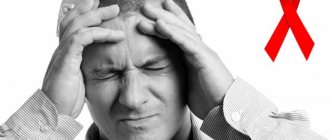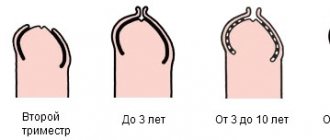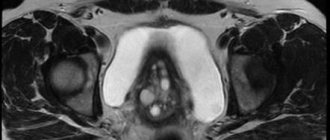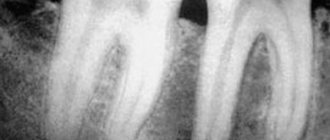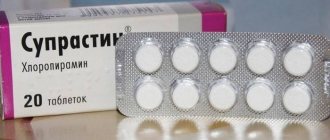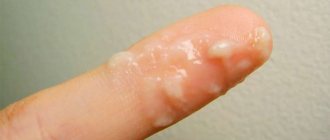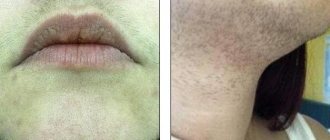Rosacea is a skin disease with a chronic, non-infectious origin, it is characterized by skin redness (vessels in the form of stars or rashes with pus, as well as pimples), most often appearing on the face. You can read the article on our website to find out what rosacea is and how to treat it. This disease manifests itself at different ages, but is especially often observed in women aged 35-45 years; it still rarely affects men, but if this happens, it occurs with noticeably greater complications. This disease mainly attacks fair skin, and it practically does not occur in children and people over 60 years of age.
Causes of the disease
External influence. Eating spices, drinking alcohol and coffee affects the stomach and its microflora, because of this, the vessels on the face tend to expand. Initially, it was believed that eating too much meat had a beneficial effect on rosacea, but scientists soon refuted this fact; the reason for this denial turned out to be that this disease also occurs in vegetarian patients. Later, scientists found that redness occurs after hot drinks (over 60 degrees) enter the body (stomach).
Symptoms
Symptoms of rosacea depend on the stage of its development:
- Prerosacea . Frequent hot flashes (hypermia), skin irritation as a reaction to provoking factors. It can even last for several years.
- Vascular (erythematous). Swelling and erythema are detected - the skin becomes very red due to the expansion of capillary vessels, and spider veins appear sporadically.
- Inflammatory (papulopostular). The vascular network is shown in multiple ways, erythema and swelling intensify, a rash (papules) appears, including a purulent form (pustules).
- Hypertrophic . Erythema persists and an increase in the structural elements of the facial skin (tissue hyperplasia), as well as the massiveness of the nose (rhinophyma), occurs.
Psychic theory
There was an assumption that the disease develops in patients with mental disorders, but after many studies, scientists could not find confirmation, although patients in the last stages showed mental abnormalities (depression and emotional breakdowns).
Rosacea can be identified by the main symptoms:
- It all starts with the skin of the face (redness), cheeks, nose, chin, near the mouth (rosacea-like dermatitis of the face), after a short period of time it does not go away on its own, sometimes redness may be observed, spreading to the back or chest;
- Multiple medium-sized bumps appear on the face, later turning into acne with purulent content. The skin becomes tougher;
- Stars appear from dilating blood vessels;
- The skin of a reddened nose becomes denser (more often in men);
- Pore expansion is observed;
- The skin becomes noticeably oily, profuse sweating appears;
- Hypersensitivity to dryness and light appears, accompanied by burning and itching.
Rosacea is divided into stages:
- Stage 1 – characterized by visible blood vessels and obvious redness of the face on the cheeks, chin, and forehead. The reason for the appearance of the 1st stage can be: stress, temperature changes, spicy foods in the diet, hot drinks, menopause, use of medications, overexertion and creams applied to the face;
- Stage 2 – papulopuustular, pustular rashes are visible on the red areas of the face, swelling of the skin near the forehead and eyebrows is observed, and photosensitivity appears. There are more rashes on the face, some appear on the scalp, due to this spread the patient often refers to itching;
- Stage 3 – pustular-nodular, as the disease progresses, the thickness of the skin can be compared to a lemon peel, parts of the face thicken (nose or forehead), in males the nose becomes more voluminous, due to which it is called pineal.
This type of nose has a bluish tint with a large number of visible vessels; later grooves appear on it; in women this is not observed, presumably due to female hormones.
Forms of rosacea:
- Steroid rosacea is a skin disease of this form that is very difficult to treat. It may occur during the treatment of other dermatological diseases with hormonal agents used externally;
- Rosacea conglobate - this form appears when treated with bromine and iodine-based products, apparently huge conglobates (ball-shaped growths) on the affected areas;
- Fulminant form - appears more often in women with neuropsychic disorders or during pregnancy, menopause, moves too quickly from the initial form to the last, women become depressed (possible development of neurosis), treatment of this form rarely helps;
- Lymphoedema - in this form of pathological process, swelling of the face predominantly occurs due to the subcutaneous layer, which tends to grow, dark red swelling is quite clearly visible (cheeks, nose, etc.), due to which the appearance of the face changes greatly. the worst side.
Rosacea also affects the eyes of patients (in 20% of cases), the patient complains of tingling, redness, itching, swelling and tearing. This symptom may precede the manifestation of the disease, and redness will appear on the skin later. This condition is accompanied by blepharitis (a disease where the skin around the eyelids turns red and peels, along with the formation of crusts in the corners of the eyes) or conjunctivitis (redness is observed in the eye, which burns, tears and hurts in the light).
Causes of Rosacea
Although the pathogenesis of the disease is not fully understood, heredity and neurovascular dysregulation of the skin are believed to influence susceptibility.
The development of rosacea is influenced by episodes when the skin's immune defense does not cope with its task - redness or a mild inflammatory reaction occurs. This often happens in the cold - the face turns red and seems to be “burning”.
Redness of the skin in the cold is one of the triggers of rosacea
Factors that can provoke and worsen the condition:
| Food and drink | Chocolate, spicy foods, soy sauce, vanilla, beef liver, dairy products. Hot drinks, red wine, strong alcohol. |
| Temperature and weather | Overheating, hypothermia, high humidity. Sunlight, strong wind, frosty weather. |
| Medicines and chemistry | Nicotinic acid, nitroglycerin, tobacco. Cosmetics (rarely), acetone, alcohol-containing hygiene products, creams containing retinoids or corticosteroids. |
| Emotional and physical state | Anger, stress, embarrassment. Physical activity, overexertion, menopause, chronic cough. |
Having a family history of the disease also increases your chance of developing rosacea.
Morbidity facts:
- Rosacea is more common in Caucasian people with light eyes;
- Usually occurs between 30 and 50 years of age;
- Affects women more, but men often have more severe symptoms;
- More than 2% of the world's population lives with this disease (data from a 2012 study).
Diagnosis of rosacea
An experienced doctor can easily identify rosacea just by looking at the patient, especially when there are characteristic manifestations of nasal pineal or if the disease is advanced. Modern dermatology can clarify the patient’s diagnosis based on the data that the doctor receives, with the necessary studies of the intestines, blood vessels, laboratory blood tests and microparticles taken from reddened skin.
An ophthalmologist, endocrinologist and other doctors may be involved in treatment, so it is recommended to seek help from a doctor in order to begin treatment in the early stages, without waiting for the disease to develop and the body’s condition to worsen. The doctor will be able to help you choose the appropriate treatment and get rid of rosacea, depending on what form of the disease the patient has.
Beautiful girls and well done: treatment of rosacea
There are diseases that are not dangerous to health and performance, but... ruin life in such a way that they seem worse than many “serious” diseases. These diseases also include rosacea (rosacea). And although popular rumor considers a red face to be a special sign of health, walking like this all the time is not much joy, especially since, sooner or later, complications will develop.
Rosacea (rosacea, acne rosacea, rosaceus, rosacea, pink acne) is a non-infectious chronic inflammatory disease of the facial skin, affecting people mainly of mature age. The causes of rosacea have not been reliably established, and theories of pathogenesis are contradictory. Obviously, this explains the fact that it is almost impossible to achieve a lasting treatment result, especially in “advanced” cases, but if you do not treat, complications will not keep you waiting.
What does it look like?
It starts simply as a flushed face. Well, you never know, a person has returned from the cold, or is working in an open-hearth, or is ashamed of something... but... this redness does not go away over time, and then, against the background of redness, a vascular network appears - pathologically dilated vessels, which in medicine are called telangiectasia. Patients feel that their complexion makes them stand out negatively, making them “guilty without guilt”...
Then, against the background of dilated blood vessels, nodules (papules) begin to form on the skin. Then pustules appear and only then - growths of the facial skin, as in the famous painting from the Quattrocento era.
Domenico Ghirlandaio (real name - Domenico di Tommaso Curradi di Doffo Bigordi) is one of the brightest Florentine masters of the Quattrocento (abbreviated from mille quattrocento - one thousand four hundred - a generally accepted designation for the era of Italian art of the 15th century).
In the painting “Portrait of an Old Man with His Grandson” Ghirlandaio painted the most common complication of rosacea - the proliferation of nasal tissue - rhinophyma. However, such growths can appear not only on the nose. The following forms are distinguished:
- rhinophyma - nose, like in a picture;
- metophyma - thickening of the skin of the forehead;
- blepharophyma - thickening of the eyelids;
- otophima - growth of the earlobe;
- gnathophyma - thickening of the skin of the chin.
The disease begins in the third or fourth decade of life and reaches its peak between forty and fifty years. Although recently about patients. Women suffer more often (60%), although this may be a statistical error due to the fact that men do not always seek medical help due to problems with their appearance.
What leads to aggravation
There are many, many factors that provoke the disease. In fact, they can be reduced to the maxim “Anything that can cause redness of the skin in a healthy person will cause an exacerbation of the disease in a patient with rosacea.” Here are the main factors to avoid.
Ultraviolet.
At one time, rosacea was even considered a photodermatosis. Therefore, sun protection equipment for rosacea should be the same as for other photosensitive diseases - a wide-brimmed hat, sunglasses, and creams with an SPF of at least 30 are required.
Open sources of fire.
Blacksmiths, workers in steel smelting and other industries related to metal smelting, professional chefs, bakers and even housewives who spend a lot of time at the stove are at risk for rosacea.
Sudden temperature changes.
On the one hand, polar explorers and people interested in winter sports, on the other, bathhouse attendants and other people working in rooms with very high temperatures. Even traveling in a hot vehicle in the summer can lead to aggravation.
Hot drinks and food.
At one time, dermatologists were up in arms about coffee. Indeed, dermatosis was more likely to worsen in those who drank coffee significantly more often than in those who avoided it. However, it turned out that if you simply drink water heated above 60 degrees, the adverse effect will be the same. Hot borscht, and even accompanied by vodka, is a guaranteed disruption of remission.
Alcohol, especially strong alcohol.
And it’s not strong, if you take it in a dose that makes your face red, it’s almost guaranteed to cause an exacerbation of dermatosis.
Peppery, spicy food.
It should also be limited in case of rosacea. There is no proven data on the effect of coffee, strong tea, chocolate, or citrus fruits on the course of the disease, however, most dermatologists recommend that patients refrain from them.
Emotional arousal, shame.
They are dangerous if they cause a rush of blood to the patient’s face.
Irrational use of cosmetics, cosmetic procedures, and self-medication is also extremely undesirable.
Topical corticosteroids are contraindicated for rosacea!
Their use is possible only in certain forms of the disease and strictly under the supervision of a physician. Unfortunately, both pharmacy workers and “good advisers” recommend them as a “good ointment” for any redness.
In general, the desire to “smear yourself with something” before consulting a doctor in the case of rosacea is especially fraught with complications. For example, remedies for so-called rosacea are often advertised. But rosacea can be a stage in the development of rosacea, and it can also be a manifestation of a wide variety of diseases and skin conditions - from constitutional erythrematosis of the face to severe hereditary syndromes that occur with the development of neoplasms.
Cuperosis is not a dermatological, but a generally accepted cosmetology term that promotes sales of cosmetic products. It describes a condition characterized by persistent redness of the facial skin and the appearance of a capillary network on it (telangiectasia), mainly in the area of the nose, cheekbones and cheeks.
If you don’t recognize the true cause of skin changes in time by contacting a specialist dermatologist, and simply smear your face with “rosacea creams,” it won’t be long before trouble occurs. Moreover, the main efforts in the treatment of rosacea itself should be aimed at changing lifestyle and preventing exposure to provoking factors.
Rosacea treatment
Rosacea requires treatment exclusively from a dermatologist. Self-medication, treatment based on the principle of “helping a friend,” and even consultations with pharmacists and cosmetologists who do not have special dermatological education can lead to disastrous results.
Recognizing rosacea among many rosacea-like diseases and facial skin conditions is not always easy, and incorrectly prescribed treatment can cause serious consequences that cannot be eliminated at all or can only be eliminated using plastic surgery methods.
At the same time, modern dermatology, which has included high-tech treatment methods, such as laser therapy for dilated facial skin vessels, is quite effective when treated in the early stages.
As drug therapy, dermatologists usually recommend long-term use of antimicrobial, antiprotozoal, and antifungal agents systemically and locally. Retinoids (modified vitamin A preparations) are also prescribed, often topically, for very long-term (months) use. All of these drugs and methods have a very extensive list of contraindications; they should absolutely not be used as self-medication.
There are also various alternative (without evidence base) methods of treating rosacea (prescribing so-called vascular drugs: Detralex, Actovegin, etc.), patients and even doctors often resort to them in the false hope of getting a quick result without effort.
Some media outlets, as well as patients, tend to exaggerate the role of demodex mites: treatment of this disease, in their opinion, will bring a complete cure for rosacea. Unfortunately, these hopes are false.
The presence of gastrointestinal diseases, hormonal disorders, foci of chronic inflammation of the head and neck organs, concomitant fungal infections, even hidden, asymptomatic ones, in rosacea worsen the course of dermatosis. Therefore, a qualified doctor will recommend extensive examination and treatment consultations with related specialists.
Alas, like most chronic skin diseases, rosacea is a disease in which long-term remissions are achievable only through an integrated approach, when drug therapy only complements non-drug treatment methods and lifestyle changes aimed at rationalizing the diet and avoiding factors that provoke exacerbation. Only a dermatologist who is motivated to spend time with you can figure all this out.
Good health!
Leonid Shchebotansky
Photo thinkstockphotos.com
Products: metronidazole gel, metronidazole tablet, unidox solutab, skinoren, azelaic acid
How to treat rosacea?
Rosacea is a chronic disease, treatment can last from a couple of weeks to several months. The disease does not provide patients with the opportunity to achieve a complete recovery, but any symptom of rosacea can be treated and it is quite possible to prevent it from developing. Therefore, complex therapeutic treatment of rosacea on the face is often used, where appropriate medications (antibiotics, creams, ointments), physiotherapy, laser treatments and decoctions are used. The doctor selects the most suitable treatment for rosacea for the patient.
Symptoms of rosacea
With a mild form of the disease, patients may complain of redness, inflammation and sensitivity of the skin in the central part of the face. The symptoms are not pronounced, so an experienced dermatologist is needed to make a diagnosis.
Over time, rosacea leads to dilation of small blood vessels in the skin and the appearance of papules (nodules) and pustules (purulent pimples). In areas of increased secretion of the sebaceous glands, yellow-orange plaques may develop (most often on the nose).
| Stage | Signs |
| Prerosacea (mild symptoms) | • Frequent facial flushes; • Irritation when using topical medications. |
| initial stage | • Longer episodes of redness; • In some places, dilatation of small vessels; • Increased skin sensitivity. |
| Middle stage | • Persistent, spreading erythema; • Edema, papules, pustules; • Enlarged pores; • Ocular changes may occur. |
| Severe stage | • Serious inflammation of the skin, boils; • Hyperplasia and fibroplasia of tissues; • Rhinophyma. |
Medications
Antibiotic treatment based on tetracycline is actively used. Metronidazole, which copes with different types of bacteria and has the ability to destroy subcutaneous mites, is also highly effective, and does an excellent job of relieving swelling. Doctors say that effective treatment for rosacea requires a fairly long course of treatment (more than a year), but it must be taken into account that antibiotics tend to get rid of both bad and good bacteria.
Therefore, it would be advisable to take Trichopolum, which does an excellent job of restoring the normal functioning of the intestines and stomach. If the patient complains of itching and various irritations, drugs such as Tavegil, Suprastin or Claritin are prescribed, and to get rid of visible star vessels, complex vitamins ascorutin are prescribed (has the property of strengthening vascular walls). It is recommended to use motherwort or valerian extract to calm the nervous system.
Local treatment
If the disease is not in an advanced stage, then rosacea can be treated mainly with creams, ointments and lotions, and thanks to a doctor’s prescription, the pharmacy prepares solutions that are used to make lotions (they include boric acid and mash). Modern drugs:
- Skinoren gel – helps relieve swelling, dries the skin due to azelaic acid. There are no contraindications; rosacea during pregnancy can be safely treated;
- Creams - remove inflammation, there are fewer pustular rashes due to the content of an antibacterial component (Metrogyl, Rozex);
- Hormonal drugs - give instant results for a short time of cure, but after stopping taking them, the disease returns and can begin to progress to a more severe form (steroid rosacea);
- Ovante cream is a drug of natural origin, gives a positive effect, and is approved for use for a long time. The composition contains crystalline sulfur and plant components.
Physiotherapeutic methods for treating rosacea:
- Weak electrical charges affect the skin (Coagulation);
- Liquid nitrogen (cryodestruction);
- Mechanical facial resurfacing (dermabrasion);
- Laser therapy helps get rid of translucent blood vessels, treats large formations and smoothes sagging skin. Basically, laser treatment for rosacea makes visible blood vessels less noticeable. Eliminates laser treatment of rosacea hypertrophied skin. Due to intense pulsed light, laser treatment removes redness of the skin. Pustular rashes dry out under the influence of high temperature. The best scalpel is a laser; it can remove skin layers of tissue with precision. When rosacea is treated with laser, doctors recommend refraining from using cosmetics a week before the procedure;
- Photocoagulation is one of the methods that copes with small spider veins.
Prevention of rosacea
Prevention of the disease is manifested in protecting the skin from the physical effects of the environment: from ultraviolet radiation, hot air, severe frost and wind. You should refrain from drinking hot drinks, hot and spicy foods and alcohol. You should use special medicinal and decorative cosmetics for sensitive skin containing horse chestnut, which not only does not irritate the skin, but can also protect it from the effects of undesirable factors.
Since rosacea is a chronic disease, a systematic visit to a cosmetologist is necessary to quickly eliminate individual elements in the form of hypertrophied blood vessels. If you follow all the doctor’s recommendations, the disease may recede, and preventive visits to a cosmetologist can be reduced to 2-3 times a year.
Treatment with folk remedies
Treating rosacea at home is no less successful, starting with lotions using effective decoctions and tinctures of plants. The only condition for a positive cosmetic effect is chilled solutions:
- Cranberry. Folded gauze in 10 layers is soaked in cranberry juice and applied to the face, with a layer of cotton wool on top. Next, everything is wrapped in a bandage and they wait from half an hour to an hour. First applications (diluted in a ratio of 1:3 with water), if the skin reacts favorably, you can make the solution more concentrated the next time (gradually reaching pure cranberry juice);
- Chamomile. An infusion of flowers is used (1:15), then gauze is soaked, folded several times, wrung out and placed on the face for 3 hours. This is done once a day;
- A series. Use 1 part herb to 30 parts water, moisten a napkin with the solution and apply it to the face for about 30 minutes;
- Calendula. At the pharmacy you buy calendula tincture, dissolve 50 ml of tincture in a glass of cold water, and then do the same as with chamomile. For stars, it is recommended to use masks from:
- Oatmeal. 2 tbsp. Grind oatmeal into powder, add 100 ml of hot water and let stand for a while. When the mixture reaches room temperature, it can be applied to the face (not thickly) for 35-40 minutes. Using a damp cloth, wet the dried parts of the mask;
- Kefir. The gauze is soaked in fresh kefir and applied to the face for 10 minutes.
Rosacea on the face treated with cosmetic procedures
The following procedures are highly effective:
- physiotherapy:
- darsonvalization;
- cryotherapy (exposure to the skin with an icy air stream);
- clay masks with carbon monoxide;
- cryodestruction (use of liquid nitrogen);
- microdermabrasion (mechanical grinding of facial skin with a special machine);
- photo and laser treatment of rosacea (peelings, resurfacing);
- antiradical and drainage mesotherapy;
- in autumn and winter - medium chemical peels.
To get rid of the conglobate form of rosacea, surgery is recommended.
Diet
As for diet, it is not advisable to consume in your diet:
- Citrus fruits, pears and grapes;
- Roast;
- Salty;
- Canned;
- Sausages;
- Seasonings;
- Spicy;
- Pickled;
- Alcoholic drinks;
- Strong teas and coffee;
- Sweets.
What is allowed to eat? It is desirable to have the following products on the menu:
- Fresh vegetables and fruits;
- Boiled meat (not fatty);
- Fermented milk drinks;
- Fish;
- Cereals;
- Bread without yeast;
- Greenery;
- Berries;
- Mineral water more than 2 liters per day.
Rosacea eye
The disease can also involve the eyes - ophthalmic rosacea .
Moreover, in approximately 20% of cases, eye damage may occur without skin manifestations on the face. Ophthalmic rosacea manifests itself as burning, pain, photophobia, and foreign body sensation. In severe cases, rosacea keratitis is rarely possible: due to persistent clouding of the cornea, the process can lead to significant vision loss.
A special form is steroid rosacea , which develops in patients who have used hormonal ointments for a long time.
You can read more about this in the article and watch the video on my channel - “Hormonal ointments - can they harm?”
The diagnosis of the disease is made clinically, that is, by external manifestations; no laboratory tests are usually carried out to confirm it.
Important! Do not try to diagnose yourself, only a doctor should diagnose it, and only a doctor can distinguish rosacea from other skin diseases. For example, such an “unpleasant” disease as lupus erythematosus!
In some cases, a diagnostic biopsy may be required to distinguish rosacea from another condition. You can read what this procedure is in my article or watch the video - “Simply about diagnosing skin diseases.”
Possible complications
A long-term disease can have a wide range of complications. These include:[1][9]
- Purulent-septic complications, including the so-called draining sinus - an oblong-oval formation rising above the skin level, from which pus is periodically released. This complication is a long-term, sluggish process of inflammation that is not prone to spontaneous regression. It can sometimes complicate fulminant and conglobate forms of rosacea.
- Progressive deterioration of vision, and in especially severe cases - up to its complete loss. This occurs as a result of advanced ophthalmic rosacea (rosacea keratitis).
- Distortion of facial features and significant deterioration in appearance are observed with significant phymatous growths, edema and persistent erythema. For most people, this complication reduces their quality of life.
- Psycho-emotional disorders, including the depressive spectrum, develop as a result of social maladjustment.
In addition to the above-mentioned likelihood of visual impairment, it is important to note changes in the psychological-emotional sphere and behavior.
Although rosacea does not pose a threat to the life of patients, the manifestations of this condition are often accompanied by depression, anxiety and self-doubt.
Good knowledge of the nature and treatment prognosis of the disease allows them to better cope with complications and relapses of attacks.
The emotional state is usually restored when symptoms are successfully eliminated. This, in turn, is possible with long-term compliance with drug therapy. It is also important to exclude factors that could worsen the patient's condition.
In addition, it is important to contact a social worker or specialized consultant if you experience feelings of severe stress, embarrassment, or similar conditions. It is necessary to share your experiences with your doctor.
Ointments for rosacea
- Zinc ointment is an effective remedy designed to fight inflammation and other processes. It has an affordable price and decent quality.
- Erythromycin ointment contains an antibiotic, which allows it to have a quick effect and have the proper effect on the skin.
- Yam ointment helps to cope with the basic symptoms of the disease and improves the condition of the skin after just a few uses.
Since the rash does not appear on the body , all products are applied to the face according to the instructions.
Peeling and cosmetics for rosacea
Does rosacea require a woman to completely give up cosmetics?
No, but the selection of cosmetics will be somewhat limited.
Cosmetic creams can only be oil-free and have SPF 30 sun protection.
The basic rules of specific makeup include:
- limiting the number of cosmetics used simultaneously;
- use of products with double or multi-effect;
- corrector with green pigment;
- foundation with a yellow tint;
- choose antibacterial brushes that must be washed immediately after use;
- Cosmetics products should not contain oil or soap bases, preferably based on hyaluronic acid and minerals;
- exclude bright, waterproof cosmetics;
- mascara, eyeliner, shadows must undergo ophthalmological testing;
- All cosmetics are selected with the “hypoallergenic” mark.
Peeling, scrub, “beauty injections” and other “deep cleansing” procedures are contraindicated for rosacea.
Patients are not allowed to visit the bathhouse, sauna, solarium, or do thermal facial treatments.
Reasons for development
Experts are not yet able to clearly indicate the causes of rosacea. The following factors are believed to be associated with the development of this condition:
- Anomalies in the functioning of the bloodstream of the face. Dermatologists tend to believe that such abnormalities provoke erythema, persistent redness and “visualization” of the vascular network. What exactly triggers inflammatory processes in blood vessels remains a mystery.
- Bright skin. People with white skin make up the majority of patients diagnosed with rosacea.
- Demodex is a microscopic mite that lives on human skin. As a rule, its presence does not cause any problems. However, in patients affected by rosacea, the number of these mites is noticeably higher than in other people. Experts are not yet able to determine whether the development of rosacea is triggered by an abnormal population of mites or whether the progression of the disease somehow triggers their reproduction.
- Helicobacter bacterium. Colonies of Helicobacter pylori bacteria that live in the gastrointestinal tract stimulate the production of bradykinin. In turn, this protein is responsible for dilating blood vessels. It is possible that the development of rosacea may also be of a bacterial nature.
- Hereditary predisposition. The family history of many patients includes close relatives affected by the same disease.
Hardware cosmetology
To eliminate the symptoms of rosacea, use:
- Cryotherapy. Liquid nitrogen massage is performed by an experienced cosmetologist. During the procedure, dead cells are removed, the skin is smoothed, and the process of tissue regeneration is accelerated.
- Phototherapy. The light streams perfectly dry the skin and heal the affected areas. The procedure is effective and painless.
- Laser. Laser treatment of rosacea is one of the most modern techniques. Laser treatment of the affected areas eliminates dead cells, reduces the number of rashes, and smoothes the skin.
Diet and lifestyle during illness
Eliminate from your diet:
- spicy food;
- hot pepper;
- vinegar;
- spices;
- citrus;
- too hot food.
Follow the recommendations:
- eat more dairy and plant products;
- limit the consumption of sweets, fried foods, allergy-causing foods;
- All types of alcohol are prohibited;
- do not eat chocolate and cocoa - they provoke skin rashes;
- give up canned food, fast food, food with dyes and preservatives;
- don't overeat;
- drink up to 2 liters of fluid per day.
Diagnostics
Diagnosis of the disease, unlike its treatment, is not difficult; the presence of this disease can be determined using the following methods:
- The visual method is the most common. Rosacea has such characteristic symptoms that in most cases it is enough for a specialist to conduct an external examination to make such a diagnosis.
- Taking for analysis elements of the microflora of the skin of the face, which is subjected to thorough examination to determine the condition of the epidermis and blood vessels. This measure is necessary in cases where the specialist was unable to make a diagnosis after the initial examination or had any doubts about its correctness.
- Taking a blood test is usually only done if the disease is suspected in women. This is due to the similarity of symptoms with the manifestation of some female diseases that affect the condition of the facial skin.
Previously, rosacea was mistakenly associated with demodicosis, but today these two diseases are maximally separated, since the presence of a subcutaneous mite in many situations is not the cause of this disease, but only its consequence, and often signs of its activity cannot be detected at all.
Features of rosacea in childhood
Features of the course of rosacea in children are noted.
This phenomenon is quite rare.
But there are childhood harbingers of teenage rosacea: prolonged, for half an hour, redness of the face after running, jumping and other physical activity.
In children, clinical signs of rosacea are:
- persistent or recurrent facial erythema;
- telangiectasia;
- papules and pustules;
- localization on the cheekbones, chin, nose;
- eye lesions.
Lifestyle correction and self-control organization
To get rid of rosacea, treatment alone is not enough. You need to completely change your lifestyle:
- avoid provoking factors;
- follow a diet;
- take proper care of your facial skin (use soft cleansing lotions, emollients, wash with warm water, use herbal masks);
- apply sunscreen;
- reduce the amount of decorative cosmetics;
- quit smoking and alcohol.
Proper nutrition helps reduce the activity of the inflammatory process. Seasonings, salt, sweets, smoked foods and foods that can provoke allergies (chocolate, citrus fruits, honey) are completely excluded from the diet. You need to eat small portions 5-6 times a day. Dishes should be at room temperature. The menu for a patient with rosacea includes:
- lean boiled meat (rabbit, turkey) and fish;
- porridge (oatmeal, buckwheat, rice);
- fresh vegetables (cabbage, carrots, lettuce, cucumbers, zucchini) and fruits (apples, pears, bananas), herbs, legumes;
- fermented milk products (kefir, fermented baked milk, yoghurts without additives);
- pasta from durum wheat;
- bran bread;
- liquid 1.5-2 liters per day.
During an exacerbation, it is better to arrange 3-4 fasting days: drink only kefir and drinking water.
The lifestyle and at-home recommendations listed below can be combined with any type of treatment.
The key point in them is minimizing influences that can cause another attack or aggravate its manifestations.
- When exposed to the sun, use sunscreen with a protective factor of at least 15
- In winter, protect your face with a scarf or ski mask
- Try to avoid touching or rubbing your face
- When washing your face, apply a mild cleanser to problem areas.
- Avoid any facial products or cosmetics that contain skin irritants or alcohol
- If your skin is sore, use a moisturizer
- Apply moisturizers only after topical preparations have dried.
- Use only products labeled “non-comedogenic.” They do not block sweat and sebaceous glands
- Don't overheat
- Eliminate alcoholic drinks from your diet
- To prevent attacks, it is preferable to use an electric razor rather than a razor with conventional blades.
- Avoid spicy foods
- Make a list of foods and drinks that are most likely to trigger the disease, and try not to consume them
- Creams and powders with a green or yellow base will help disguise red spots
- Avoid using over-the-counter steroid creams unless prescribed by your doctor. Medium- or long-term use of such drugs may worsen symptoms of the disease
Stress.
A lifestyle associated with stress and high loads can trigger the appearance of rosacea. Many experts tend to consider stress to be an important trigger for rosacea.
Any measures to reduce stress levels will help avoid worsening the symptoms of the disease and its development into a more severe stage.
Measures to eliminate stress include regular exercise, getting at least 7 hours of healthy sleep every day and eating a balanced diet.
Remember, intense exercise with increased stress is a trigger for rosacea.
In this regard, patients are recommended to engage in moderate intensity activities such as walking or swimming.
Yoga, tai chi, breathing practices and meditation are also useful for relieving stress.
Symptoms and stages of the disease
The main signs of rosacea are persistent redness, itching, the formation of pink acne nodules, as well as pustular infiltrates.
There are 3 stages of the disease with the following characteristic signs of this process:
- The erythematous-telangiectatic stage is expressed by moderate redness, periodically localized in the center of the face. As the disease progresses, the redness becomes persistent and more extensive (can cover the entire face and neck), and the nodules become denser. In this case, a person experiences a feeling of itching, burning, tingling in the affected areas of the skin, which over time acquire a bluish tint.
- The papulopustular stage is characterized by the appearance of red papules in the cheeks, nose, chin, forehead and nasolabial folds, the size of which can reach 5 millimeters. Their structure is dense, with thin scales on the surface. They are localized in isolation or grouped without merging with other foci. This stage is accompanied by the appearance of infiltrates and swelling of the skin.
- The pustular-nodular stage is manifested in the appearance of persistent individual redness with many new foci on the surface of the skin, as well as plaques, edematous nodules and papules, merging into single, extensive conglomerates. Hyperplasia of the sebaceous glands, the appearance of connective tissue compactions, and cicatricial deformities lead to an increase in areas of skin damage. Against this background, disturbances occur in the blood and lymph flow, and puffiness of the face appears. The growth of tumor-like formations disfigures the face, and a severe form of the disease begins to develop - rhinophyma.
About half of patients experience eye damage, accompanied by redness, dryness, lacrimation, pain and a sensation of the presence of a foreign body.
Clinical signs of rosacea
There are three main stages of rosacea.
Stage 1:
- temporary (several hours or a couple of days) redness (rarely bluishness) of the facial skin in the forehead, cheeks, nose, décolleté and back under the influence of a trigger;
- spider veins;
- thin dry sensitive skin;
- hyperesthesia and allergic response to cosmetic procedures and external medications.
Stage 2:
+ bright red skin on the face;
+ temporary (several weeks) appearance of papules and pustules in the same location as the erythema.
Stage 3:
+ large inflamed nodes
+ boils
+ skin growth with disfigurement of facial features.
The clinical picture of rosacea can develop according to several scenarios.
Erythematotelangiectatic rosacea:
- temporary erythema of the skin of the face, décolleté, neck, back;
- ectasia - spider veins due to expansion of the vascular wall of the capillaries;
- swelling of the face;
- burning, itching, numbness;
- inflammation of areas of the skin, such as perioral dermatitis;
- peeling.
Papulopustular rosacea:
- groups of bright red painless nodules (papules) that disappear without a trace.
- swollen, porous skin.
Isolated papular and pustular rosacea occur.
Phymatous rosacea:
- large nodes and plaques;
- confluent nature of skin rashes;
- thick, greasy skin;
- fibrosis due to enlarged sebaceous glands;
- skin growth on certain parts of the head (“fima”);
- facial disfigurement due to the proliferation of skin areas;
Rhinophyma is the growth and thickening of the epidermis on the nose. The nose is red, with thick skin, possibly with pustular changes;
Metophyma is localized on the forehead;
Blepharophyma - on the eyelids;
Nnatofima - on the chin;
Otophyma - thickening of the ears.
Fibrous-angiomatous (vascular) actinic form
- thick, greasy skin with plaques;
- proliferation of blood vessels;
- scaly patches associated with increased sensitivity to sunlight.
Ophthalmic rosacea or ocular rosacea.
Eye damage that occurs before or after the manifestation of skin manifestations (around the eyes).
Patients complain that the skin around the eyes is thin, dry and itchy.
- blepharitis (inflammation of the eyelids);
- conjunctivitis - inflammation of the outer mucous membrane of the eye with redness, lacrimation and photophobia.
- Iritis is inflammation of the iris of the eye with redness, lacrimation and pain.
- hypopyon is an accumulation of pus in the anterior chamber, accompanied by pain, tear flow, photophobia, “clouding” and decreased visual acuity.
- keratitis - inflammation of the cornea with ulceration, pain, hyperemia and cloudiness in the eye.
Pachyderma or persistent swelling:
- long-term constant swelling of the skin (forehead, nose);
- when pressed, they do not form pits;
- dense areas of skin hyperemia.
Fulminant rosacea appears suddenly in young women:
- localized on the chin, forehead and cheeks;
- diffuse hyperemia;
- thick, greasy skin;
- purulent nodes in the form of abscesses;
- pustules;
- draining sinuses.
Glandular or lupoid rosacea:
- more common among men;
- thick, greasy skin;
- isolated pustules;
- many brown or yellow-brown nodules;
- history of acne (acne acne);
- granulomatous inflammation of the lower eyelids.
Conglobate rosacea , observed mainly in middle-aged and elderly women, resembles acne.
- diffuse erythema of the facial skin;
- purulent nodules in the form of small abscesses and cysts;
- plaques, that is, areas of sclerosis with reduced sensitivity, sometimes with scales;
- localized on the face
Perioral dermatitis
Rashes around the mouth in the form of hemispherical millet grains and goose bumps.
Small groups of nodules or pimples on a background of normal or slightly reddened skin, accompanied by itching, burning and tightness of the skin.
Perioral dermatitis occurs only around the mouth, on the chin and along the red border of the lips.
It occurs constantly, without pronounced exacerbations and remissions, which is what makes it different from rosacea, which is similar at first glance.
Seborrheic rosacea
Seborrheic dermatitis, which affects the skin of the face and scalp, is characterized by the formation of yellowish-white scales under the influence of the fungus malassezia furfur.
Exacerbations are seasonal in nature, and also under the influence of triggers: infectious diseases, errors in diet, change in climate zone, changes in hormonal levels.
Steroid rosacea is a dermatitis that develops as a result of long-term use of steroid medications (oral, topical, and even inhaled medications).
Rosacea treatment with laser or antibiotics
There are many methods for eliminating this process, which can be local or general in nature. Sick people are prescribed ointments, gels, creams, but sometimes, in complicated situations, more radical measures are required. This includes oral antibiotics and laser therapy.
Antibiotics: pros and cons
Antibacterial therapy is aimed at suppressing the effects of the main pathogen. A drug containing several main active ingredients is prescribed.
- tetracycline;
- metacycline;
- erythromycin.
Advantages of the technique
- Quick effect of treatment;
- duration of the result obtained;
- affordable cost of therapy.
Disadvantages of antibiotics
- The need to restore immunity;
- a large number of contraindications;
- possibility of side effects and complications.
Laser therapy: pros and cons
This method involves exposing the affected areas to a special laser.
Along with this physiotherapeutic method, electrocoagulation is used, which involves exposure to electric current,
and nitrogen therapy.
The advantages of the methods are high efficiency and long-lasting results; the disadvantage is high cost.
Which treatment option to choose is up to each patient, but in any case, consultation with a doctor is necessary.
Skin Care Tips
Every woman with rosacea tries to hide skin defects. Redness on the cheeks, chin and nose looks unsightly, therefore, along with treatment, the issue of masking the manifestations of pathology, especially during an exacerbation period, also becomes relevant.
Skin care cosmetics for rosacea can become an additional means of treating pathology
With proper care of the affected skin, the manifestations of pathology can be significantly reduced. To do this, patients need to use the following advice from cosmetologists:
- Choose cosmetics that are free of irritants. For inflamed skin affected by rosacea, it is necessary to eliminate those medications that contain alcohol, menthol, witch hazel, mint, and eucalyptus.
- Do not use scrubs or other products that cause minor injuries to the surface of the skin for skin care.
- Avoid cosmetics containing fragrances and fragrances. According to a study conducted by the American Dermatological Association, these are the ingredients in skin care products that most often provoke contact dermatitis.
- Before applying cosmetics, especially new products, you need to test them on a small area of the skin, for example, in the elbow area or behind the wrist. Further use on the face is possible only if the skin does not give an allergic reaction. If red spots, hives or itching appear, then such cosmetics cannot be used.
- Patients with rosacea are advised to use a minimum of cosmetic products, and use only the most necessary and proven products. There is no need to apply various nourishing lotions and milk if the skin is not dry. If you need to use different products, you can consult your doctor and choose a multifunctional product that will help you achieve several goals in one use.
- When washing for dry skin, you need to choose creamy, non-foaming products; for normal skin, choose cosmetic products for washing sensitive skin. For oily skin, it is better to use foaming products containing lathering ingredients.
- Follow the washing rules and do not use abrasive products. It is better to wash off cosmetics with warm water and blot your face, but do not wipe it. If it is necessary to apply the drug, you must wait until the skin is completely dry.
- If you have rosacea, it is important to use products to protect your skin from dryness. In the summer, it is necessary to apply powerful anti-ultraviolet agents, but at other times of the year, a minimum level of protection (15) will be sufficient. Sunscreens, lotions and sprays form a barrier film and protect blood vessels from dilation.
- When applying makeup, avoid powder, foundation and other products that penetrate deeply into the pores of the skin. They contribute to the development of inflammatory processes, after which large ulcers form on the skin, which are difficult to get rid of.
Is it possible to cure rosacea forever - patients who are actively struggling with this pathology are interested. Unfortunately, the pathological process on the skin very often recurs, so rosacea lesions appear again and again in different places. Long-term remission is a great effort for both the doctor and the patient. This is already a huge success in the treatment of pathology.
Rosacea cream
When considering how to treat the disease, it is worth noting that creams are effective means for eliminating the disease. Below are the best creams of domestic and foreign production, designed to eliminate the symptoms of ailments in a short period of time.
- OVANTE cream effectively helps fight all skin processes that lead to the formation of a rash . There are no chemicals or antibiotics in the composition, which makes the composition preferable.
- ROZAMET - this natural, highly effective drug helps reduce redness and eliminate acne. The product has an excellent antimicrobial effect and actively fights any problems.
- ROZEX - has a detrimental effect on sensitive microorganisms and allows you to overcome any processes caused by the disease in question.
- RUBORIL - this cream has a safe and effective composition, it compares favorably with other products, since it gives results after just a few uses.
- NORITAKE - the drug is effective and safe, suitable for men and women of any age. Helps fight the main manifestations of the disease.
Since the child does not develop a rash, these medications are not used for children.

